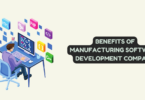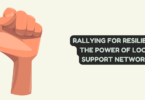
User Experience Design: Definition And Benefits
User experience design has been a buzzword in the tech industry for a while now and for a good reason. A well-designed user experience can create positive brand recognition and increase customer loyalty.
In this article, you will learn more about the process and benefits of UX.
User experience design definition
By definition, UX design is the process of enhancing user satisfaction by improving the usability, accessibility, and pleasure provided in the interaction between the user and the product.
It is a process that involves creating a positive interaction between a user and a product. It includes the design of the interface, the user’s interaction with the product, and the emotions the user feels while using it. User experience designers consider the functional and emotional aspects of a product to create an experience that is intuitive, efficient, and enjoyable for the user.
What are some common user experience design principles?
Common user experience design principles include simplicity, consistency, and feedback. The design should be easy to use and navigate, with a consistent layout and visual style. The product should provide feedback to the user, such as confirmation messages or progress bars.
Can user experience design be applied to non-digital products?
Yes, user experience design can be applied to non-digital products such as physical products or services. The principles of user experience design, such as usability and accessibility, can be used to create a positive experience for the user.
The benefits of user experience design
User experience design has numerous benefits for businesses and users. Below are some of the advantages of investing in UX design:
Increased user satisfaction
One of the primary benefits of UX design is increased user satisfaction. A well-designed product that meets the user’s needs and expectations creates a positive experience for the user, which can lead to increased customer loyalty.
Improved customer engagement
User experience design can improve customer engagement by providing users with a memorable experience that leaves a lasting impression. Customers who have a positive experience are more likely to engage with a brand and share their experience with others.
Increased revenue
Without a doubt, one of the greatest benefits of user experience design that motivates many businesses to invest in it. UX design can increase revenue by improving the user’s ability to complete tasks, reducing the number of errors, and making the process more efficient. Customers who can easily navigate a website or use an app are more likely to complete a purchase or use the product again.
Reduced development costs
User experience design can reduce development costs by identifying potential issues early on in the design process. This prevents the need for costly redesigns and modifications down the line, saving time and money.
Competitive advantage
Businesses that invest in user experience design gain a competitive advantage by providing a superior product and experience compared to their competitors. A well-designed product can differentiate a business from its competitors and create brand recognition.
How can businesses measure the effectiveness of user experience design?
Businesses can measure the effectiveness of user experience design by conducting user testing and collecting feedback from users. This data can be used to make improvements to the product and enhance the user experience.
In conclusion – User experience definition and benefits
By definition, user experience design is a process whose sole objective is to design a system that offers a great user experience to the potential customers of a business.
User experience design is an essential aspect of creating a product that meets the needs and expectations of the user. A well-designed user experience can increase customer satisfaction and loyalty, improve engagement and revenue, and provide a competitive advantage. By investing in user experience design, businesses can create a positive brand image and provide a memorable experience for their customers.
Not to mention UX is an integral part of creating a product that stands out in a competitive market. By prioritizing the user’s needs and expectations, businesses can create a product that is intuitive, efficient, and enjoyable to use.






